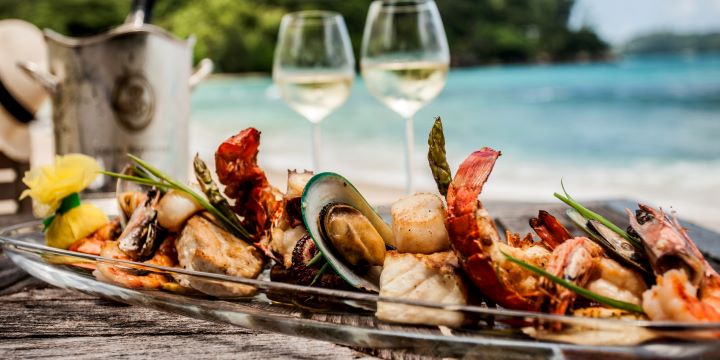Table of Contents:
- Introduction to Sustainable Seafood
- The Global Impact of Overfishing
- Certifications and Labels to Know
- How to Choose Sustainable Seafood at the Market
- The Power of Technology in Sustainable Fishing
- Seafood Sustainability Around the World
Introduction to Sustainable Seafood
The seas and oceans of our planet are a source of life, sustenance, and wonder. Yet, the future of these blue expanses—and the abundant life within—hangs in the balance due to unsustainable human practices. When you sit down at a restaurant in Pier 39, the choice of seafood before you is more than a culinary preference; it is a link in a chain that connects with the health of our oceans. Sustainable seafood stems from environmentally sound practices that ensure marine populations thrive long-term. It encapsulates responsible sourcing methods that consider the entire ecosystem, including how fish are caught or farmed, the health of marine habitats, and the vitality of fish populations.
The Global Impact of Overfishing
The voracious appetite for seafood has led to the widescale depletion of many fish populations. Overfishing is not a small-scale problem; it has become a global environmental challenge requiring immediate and concerted effort. The statistics are alarming: the FAO’s report paints a picture of a world where more than a third of fish stocks are overfished, leaving fragile marine ecosystems struggling to recover. The consequences extend beyond environmental concerns, spilling into food security, the economy, and community resilience. The depletion of fish stocks risks the livelihood of millions around the globe, particularly in developing countries where fishing is a lifeline.
Certifications and Labels to Know
In navigating the seascape of seafood offerings, eco-conscious buyers are aided by a fleet of certifications and labels. These emblems, which come from several recognizable programs, serve as beacons, signifying that a product meets defined standards for environmental stewardship. Organizations such as the Marine Stewardship Council (MSC) and the Aquaculture Stewardship Council (ASC) propelled the journey toward a credible certification system. These certifications are the currency of trust for consumers seeking assurance that their seafood does not contribute to the problem of overfishing or pollution. Likewise, ‘Dolphin Safe’ labels and the ‘Seafood Watch’ program empower consumers to make choices that align with preserving our oceans’ health.
How to Choose Sustainable Seafood at the Market
When venturing into the bustling arena of a marketplace, the conscientious consumer is faced with a spectrum of choices. In the quest for sustainable seafood, discernment becomes the watchword. First and foremost, buying seafood with recognized certifications such as MSC or ASC can swerve support toward nurturing practices rather than depleting our marine resources. Next, the choice often concerns selecting locally sourced and in-season seafood. This cuts down on the carbon emissions from long-distance transportation and often means that these options adhere to regional fishing regulations and seasons, reducing the likelihood of overfishing.
It is also beneficial to diversify choices, stepping away from popular overfished species and toward a variety of less common options. This not only spreads out the fishing pressure, leading to better-maintained stocks but also introduces diners to a new world of culinary experiences. In the end, the deciding factor may be trust: knowing the source of your seafood and trusting in the ethical practices of your supplier can be the anchor in your journey towards supporting sustainable seafood.
The Power of Technology in Sustainable Fishing
Technology is a formidable ally in the tide against unsustainable fishing practices. New systems developed for monitoring, tracking, and managing fish stocks have created a more transparent and efficient framework. Sophisticated satellite tracking and electronic reporting systems enable a comprehensive overview of the commercial fishing landscape, providing crucial data that inform quota systems and help prevent over-exploitation of marine populations.
Furthermore, traceability from catch to consumer is increasingly becoming the norm in the industry. Blockchain technology, which allows for secure and unalterable records, ensures that every step of the seafood’s journey is documented. Such granular traceability deters the unlawful activities associated with IUU (illegal, unreported, and unregulated) fishing, offering consumers peace of mind and guaranteeing legitimate operators the standing they deserve. The digital wave in sustainable fishing is not just a trend; it’s a blueprint for the future.
Seafood Sustainability Around the World
The tapestry of sustainable seafood is woven with diverse international threads, each reflecting their origins’ unique cultural, economic, and ecological context. While some nations struggle to implement sustainable practices, others surge ahead. The Nature Sustainability study underscores that countries like Norway and Iceland are setting standards for responsible fishing, thanks to their sophisticated management techniques and robust governance frameworks. These countries underscore the viability of sustainable practices, demonstrating how combining scientific innovation, strong policy, and industry compliance can lead to a thriving sector that doesn’t come at an unsustainable cost to the environment.
By scrutinizing these success stories, other nations can adapt and adopt best practices to fit their scenarios. The quest for universally sustainable seafood is not about a one-size-fits-all model but about the global community learning from each other’s successes and missteps. It is a collective journey toward effecting a sea change where the health of the oceans is viewed as a communal treasure and responsibility.
Key Takeaways
- Understanding and choosing sustainable seafood is essential for protecting marine biodiversity and ensuring long-term ocean health.
- Recognizable certifications and eco-labels are critical in guiding consumers toward responsible seafood choices.
- Global efforts and technological advancements are critical for achieving sustainable fishing practices worldwide.



